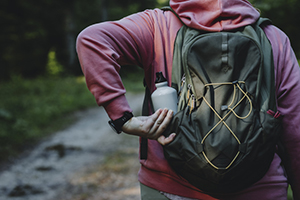
From AACRAO Membership Intern, Raffa Kanner.
Everyone has the right to education. Education shall be free, at least in the elementary and fundamental stages. Elementary education shall be compulsory. Technical and professional education shall be made generally available and higher education shall be equally accessible to all on the basis of merit.
Article 26 of the Universal Declaration of Human Rights, 1948
AACRAO is committed to maintaining and improving higher education opportunities. As a result, UC Davis and AACRAO developed Article 26 Backpack, a digital tool created to combat physical and social barriers faced by refugees and asylum seekers trying to continue their education. The A26 Backpack was initially developed for students displaced by the Syrian Civil War but eventually expanded to encompass anyone experiencing academic vulnerability. With refugee crises in countries like Afghanistan, Haiti, Syria, and Venezuela, Article 26 Backpack is critical to helping students along their journey. To learn more about Article 26 backpack read the webcomic “Hope is good. A plan is better: The Article 26 Backpack”.
What are its Capabilities?
UC Davis’ Article 26 Backpack gives refugees and displaced students a safe place to store their educational credentials during times of uncertainty. Students who decide to use the Backpack will be supplied with a personal profile. Benefits that are accessible in the Backpack include confidential storage space for academic documents, supplemental educational experiences, and outreach and advisor services. Additionally, students using the Backpack have the option to submit documents for professional credential evaluation.
How do you use it?
Students should check the Article 26 Backpack reference form for inquiries about their eligibility. To use the Backpack, students will need an active email address, a computer, and access to the internet. Next, students will create an account with the information they would like to keep in the backpack. Common items stored in the digital backpack include digital transcripts, resumes, professional certifications, and diplomas or proof of education. The Backpack guide handbook supplies students with all the information they need about creating an account. See an example of a Backpack account here.
Once a student has uploaded documents to their backpack, they will have access to them anywhere in the world. Students can share their saved documents with universities, scholarship organizations, employers, and government agencies when they have access to the internet. Additionally, students have the opportunity to submit their documents for credential evaluation from accredited professionals. But the documents in their backpack are only visible to the students themselves, unless they decide to share them.
The developers of this program created the backpack with an interface for multiple languages. As a result, students can access backpack material in Arabic, Spanish, Dari, Pashto, and various other languages, if necessary.
Student Testimonials
The Backpack tool also gives students the opportunity to create short videos about this experience. Watch Jihad, an Article 26 Backpack student, recount his story, and the events that brought him to Backpack.
Stay Involved
Join the International Activities Group - a Google group where you can discuss international activities, share your expertise, and promote good practices across the field.